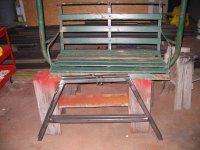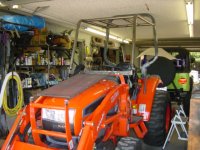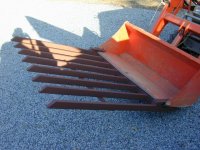Maine_Polack
Gold Member
What might be some procedures for insuring that things stay true while welding?
A couple of problems I ran into follow.
On the attached picture...I had the side arms connected, front and back. I tacked on the cross pcs. (light color), as shown. Then I took the whole thing off the tractor to finish welding etc. When I put it back on the tractor, One of the side arms was 1/4" or so off. I could not connect it until I expanded the mounting hole with a file.
A couple of problems I ran into follow.
On the attached picture...I had the side arms connected, front and back. I tacked on the cross pcs. (light color), as shown. Then I took the whole thing off the tractor to finish welding etc. When I put it back on the tractor, One of the side arms was 1/4" or so off. I could not connect it until I expanded the mounting hole with a file.





